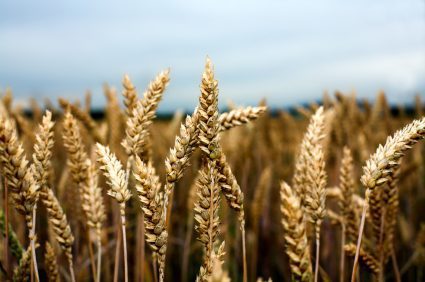
The UN Convention to Combat Desertification and World Meteorological Association are calling for greater international action and coordination as a continuation of the severest drought conditions in decades, if not history, are being experienced in the southern hemisphere this summer. The persistence of extreme drought conditions in Australia, Argentina and other parts of the world are portents of the increasing threat, costs and potential agricultural crises associated with shifts in climatic conditions, they assert.
The droughts in Australia and Argentina, two of the world’s leading agricultural exporters, bring to the fore the the threats a changing climate poses to the security of food supply, not only in those countries, but worldwide. The western US and northern China are two other large high-producing agricultural regions flagged by researchers as being especially prone to and threatened by drought.
The world needs to increase its efforts to tackle the unpredictable and extreme occurrences of drought,” UNCCD executive secretary Luc Gnacadja stated at a conference in Bonn earlier this month. “In its latest assessment the Intergovernmental Panel on Climate Change (IPCC) forecast that the length and severity of droughts would intensify in the future. The panel particularly pointed to Australia as a region that would be severely affected. The IPCC report also revealed that climate-related disasters in Latin America have more than doubled since 1970. The drought in Argentina is just a further example.”
Growing threat of drought
Less rainfall and persistent drought leading to a collapse in soil quality and agricultural productivity raises the specter of mass dislocations of people and a corresponding increase in the potential for social unrest and disruptions in countries around the world.
Argentina’s agricultural ministry ONCCA on Feb. 4 acknowledged that it has been rejecting export permits for wheat. Rainfall in Argentina has been well below the norm since last March resulting in crop failure and the loss of some 800,000 cattle. Wheat, maize and soy harvests are expected to fall by as much as 80% in the Pampas and Entre Rios regions. Argentina’s grain production is expected to fall 39% overall with losses of as many as 1.5 million cattle.
The so-called “Big Dry” being experienced in southeastern Australia is decimating crop production and soil in the Murray-Darling Basin river system, the country’s breadbasket. Home to some 43% of Australia’s farms, grain storage facilities are at 16% of capacity and 73% below normal for this time of the year, according to the UNCCD.
Well north, the Chinese government has classified half the country’s winter crop as ‘under threat,’ with the Henan region experiencing its worst drought in almost six decades. Drier and drought conditions also threaten sub-Saharan and southern Africa, a vast region where subsistence farming is the means of survival for many millions.
Call to Action
“The food crisis continues in countries that deal with erratic rainfall, like in sub-Saharan Africa. In addition, many of these countries are food importers, so to see the extreme drought in Argentina, Australia, and now China, is indeed alarming,” says Mr. Gnacadja.
It is necessary to coordinate more now than ever the successful sustainable farm practices on a global basis as climate change presents a greater threat to food production. By implementing the Strategy, countries will promote sustainable land management and generate global benefits for farmers and other land users around the world.”
The Intergovernmental Panel on Climate Change’s climate projections for 2011 also warn of increasing severe droughts in the continental US and Mexico, as well as the Mediterranean Basin. Severe heat waves are forecast to increase worldwide, particularly in the western USA, northern Africa, the Middle East and central Asia, southern Africa and Australia.
To cope with the threats of increasing drought and extreme temperatures on agriculture, rangelands and forests, the World Meteorological Association is looking to develop a standardized drought index that could be applied practically across a wide range of agricultural purposes around the world. WMO members at a recent workshop urged that the organization take steps immediately to identify the methods and draw together the resources for the development and dissemination of drought index tools and methods as quickly as possible.



ok
This information is wildly misleading. It reports a drought since March 2010, wtihout saying that it is absolutely normal to have drought conditions in Argentina during a La Niña episode as the one presently occurring. The report does not mention the big rain increase experienced in Argentina until February 2010 due to the El Niño episode that left room to La Niña. The El Niño brought a record crop in the country, and La Niña will cause a drop in yields and amount of crops.
Nothing abnormal. Furthermore, the ban on wheat export by ONCCA on February was way before the drought settled in. The ban was in connection with the absurd fight the leftist government has been having with the farmer and cattle community since March 2008 because the government wanted to impose a 45%-90% export tax on the agribusiness. It already has curtailed meat export in order to send the cattlle business into bankruptcy and force them to accept outreageous taxes. The ban of meat exports has caused Argentina to lose markets worldwide, letting Uruguay to become a much bigger meat exprter than Argentina, a country 10 times as large as Uruguay.
Evreything -including the above report- has to do with politics and nothing with climate.
Eduardo,
Thanks for the comment and insight. Just FYI, the post you’re commenting on was published in February of 2009. Not sure if that will change the thrust of your message, but thought you might want to know that.